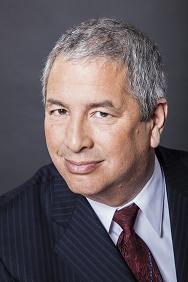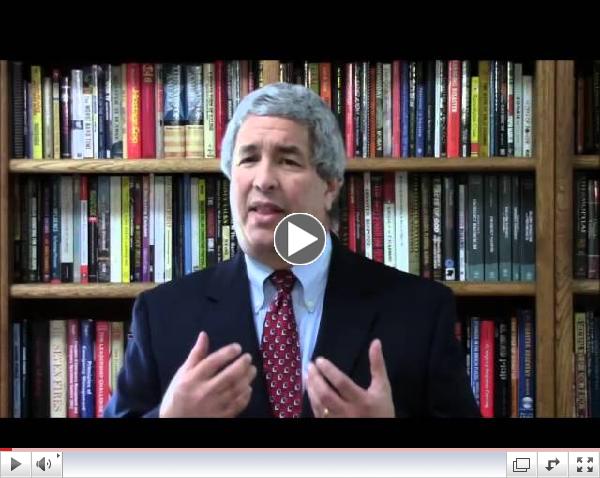|
|
| San Francisco 1906 Earthquake - Before and After |
This short video opens and closes with images of San Francisco's Market Street. In between is a combination of photographs and rare movie footage from the earthquake. The contrast between the opening and closing footage provides a graphic view of the damage caused by the earthquake and fires. |
The following are excerpts from my blog
Canton on Emergency Management. Please visit my blog to see the rest of my articles.
Disasters Create Emotional Connections with Future Generations
An attempt to rename a fountain with connections to the 1906 San Francisco earthquake and fires shows that the past is not forgotten by present day San Franciscans.
|

What Is The Leadership Challenge?
 Is leadership a learned behavior or an innate personality trait? While there are certainly naturally charismatic individuals who are considered "born leaders", leadership is a measurable set of behaviors that can be learned and taught. This is the conclusion arrived at by researchers Jim Kouzes and Barry Posner after years of rigorous research. Starting in 1982, Kouzes and Posner set out to understand what happened when leaders performed at their personal best. They conducted hundreds of interviews and reviewed hundreds of cases studies and survey questionnaires. What emerged were five fundamental practices common to extraordinary leadership achievements:
- Model the Way
- Inspire a Shared Vision
- Challenge the Process
- Enable Others to Act
- Encourage the Heart
The Leadership Challenge begins with a 360-degree assessment of thirty leadership behaviors associated with the five practices, the Leadership Practices Inventory. The results are used to identify opportunities for improving as a leader by increasing the frequency of specific behaviors. Based on over thirty years of research, the Leadership Challenge is an effective and practical tool for leadership development.
To find out more about the
Five Practices of Exemplary Leadership
, consider taking
The Leadership Challenge
. Just click on the icon below for more information:
|
|
| Click here to take The Leadership Challenge |
____________________________________
The Leadership Challenge: How to Make Extraordinary Things Happen in Organizations
by James M. Kouzes & Barry Posner
_______________________________
The Leadership Challenge is a registered trademark of John Wiley &
Sons, Inc.
|
Free Resource Guide for Solo Consultants
For solo consultants, true wealth is discretionary time. Don't waste yours on simple tasks that can be handled by technology. This free resource guide reveals the four essential online tools I use to manage my solo consulting practice and save hours of valuable time. And the best part is - they're free!
 Interested in exploring the world of consulting? My membership site might be just the resource you need to get started. You'll have access to blogs designed to answer very specific questions, a resource library of templates and articles, the opportunity to network with peers, and discounts on coaching and training programs. Download the free guide or click on the logo above to go straight to the site.
Interested in exploring the world of consulting? My membership site might be just the resource you need to get started. You'll have access to blogs designed to answer very specific questions, a resource library of templates and articles, the opportunity to network with peers, and discounts on coaching and training programs. Download the free guide or click on the logo above to go straight to the site.
|

M
y Blogs
Follow Me
 |
|
Archive
|
|
|

Welcome to the April edition of Emergency Management Solutions.
April is always a special month here in San Francisco, particularly for those of us connected with emergency services. It's the anniversary of the 1906 earthquake and fires, an event that took over 3,000 lives and destroyed nearly 80% of the City.
As a result, San Francisco is a fire town and much of our response infrastructure is based on lessons learned in the disaster. In addition to our municipal water supply, San Francisco has a separate high pressure system that can draw from the Bay if necessary and a series of 172 underground cisterns holding 11 million gallons of water.
There's a reason our City's corporate seal includes a phoenix rising from the ashes.
Regards,
|
|
_
________________________________________________
Practical Preparedness Revisited
Is Our Preparedness Message Effective?
|
|
|
April is earthquake month in San Francisco, the anniversary of the 1906 earthquake and fires. We us the opportunity to encourage preparedness among the general public. But with the passing of the years I have begun to question whether our message is as effective as we would like to think.
Back in 2010, one of my first white papers dealt with the issue of practical preparedness. In revisiting that paper, I was disheartened to see that nothing has really changed.
_______________________
________
If you are having trouble viewing my featured article, try clicking on the link at the top of the page. You can always find my articles in the white paper section of my blog site,
Canton on Emergency Management.
|
|
Independent Study Courses for the National Prevention Framework
Last month, the Emergency Management Institute released a number of courses that support the National Preparedness Goal:
- IS-2000 National Preparedness Goal and System Overview
- IS-2500 National Prevention Framework, an Introduction
- IS-2600 National Protection Framework, an Introduction
- IS-2700 National Mitigation Framework, an Introduction
In addition, FEMA released an update to IS 800, I 800.C: National Response Framework, an Introduction.
The courses can be found on the EMI website at https://training.fema.gov/is/.
NIMS Resource Management Supplemental Guidance and Tools for National Engagement
FEMA's National Integration Center is seeking public feedback on a number of National Incident Management System (NIMS) Resource Management component documents that enhance interoperability and the effectiveness of mutual aid. This National Engagement Period will conclude at 5:00 p.m. EDT on May 9, 2018. The National Engagement Period provides an opportunity for interested parties to comment on newly development supplemental guidance.
The NIMS Resource Management Supplemental Guidance and Tools available for national engagement here include:
- NIMS Emergency Operations Center (EOC) Skillsets User Guide and 17 EOC Skillsets to help create a national vocabulary for EOC personnel qualifications, while remaining flexible for the diversity of EOC organization structures
- NQS EOC Director and Division/Group Supervisor (DIVS) Job Titles/Position Qualifications that define minimum qualifications criteria for personnel serving in these positions;
- NQS EOC Director and Division/Group Supervisor (DIVS) Position Task Books (PTB) that identify the competencies, behaviors, and tasks that personnel should demonstrate to become qualified for these positions.
Professional Development Opportunities
Federal Emergency Management Agency
June 4-7, 2018
Emmitsburg, MD
This symposium will focus on the academic discipline of emergency management and developing instructional and research skills. Topics include the scholarship of teaching and learning, research methodology and integration, and program policy and administration.
July 8 - 11, 2018
Broomfield, CO
Since 1975, the Natural Hazards Center has hosted the Annual Natural Hazards Research and Applications Workshop in Colorado. Today, the Workshop is attended by over 500 federal, state, and local emergency officials; representatives of nonprofit and humanitarian organizations; hazards researchers; disaster consultants; and others dedicated to reducing risk and alleviating the harm from disasters.
Grand Rapids MI
The goal of the IAEM Annual Conference is to improve knowledge, competency level and collaborative skills. IAEM accomplishes this by attracting relevant high-profile
speakers to address current topics and practical solutions.
|
|
|
Dressing for Success
Some years ago, there was a popular book called
Dress for Success. The author, John T. Molloy, had done studies on how people reacted to what you were wearing and offered suggestions for how to achieve the right corporate look on a modest budget. Molloy's studies suggested that dressing a certain way communicates a lot about how you view yourself and can help you gain acceptance as others recognize you as "one of them." This shouldn't be surprising; the ability to recognize the outsider is a survival mechanism that dates to prehistoric times when a newcomer might pose a threat.
Elsewhere I have tried to make the case that emergency managers should be viewed as trusted agents who offer counsel to senior executives and elected officials rather than as technicians who do emergency plans. An essential part of becoming a trusted adviser is being accepted as a peer, if not to the person being advised, at least among other advisers. You need to be part of the inner circle if you are going to be effective.
This brings us back to Molloy's research. The typical polo shirt with logo and chinos worn by many emergency managers simply screams "technician". Technicians may be respected but they are seldom accepted as peers by senior officials. There are times and environments where such a look is appropriate, such as when engaged in response operations, and I don't mean to demean it but if you want to be accepted as an adviser, you need to look the part.
The way to begin is to look at the way your senior executive or elected official is dressed and mirror that look. My boss in San Francisco, Mayor Willie Brown, was known for his fashion sense and style. We couldn't match his $5,000 custom-made Brioni's but all of my male staff wore ties and we all dressed as business professionals. We were accepted by other members of the Mayor's staff and by the department heads with whom we worked.
Dressing the part is only the first step towards acceptance as a trusted adviser. But it does make it slightly easier to gain acceptance. There's a reason Molloy's books are still in print.
|
 San Francisco Is Burning: The Untold Story of the 1906 Earthquake and Fires San Francisco Is Burning: The Untold Story of the 1906 Earthquake and Fires
By Dennis Smith
Each book on the 1906 San Francisco earthquakes tends to have its own slant but, by and large, there is a certain sameness to them. It is a rare that a book offers something new. Smith's book does just that, digging beneath the well known events to truly examine the operational side of the earthquake.
For most books, the role of the Navy and its contribution to the firefighting effort is a footnote. Smith, a former firefighter himself, shows just how significant that contribution was. In doing so, he highlights the role of Lt. Frederick Freeman, a forgotten hero whose leadership saved the docks that would be vital to San Francisco's recovery.
This is one of my favorite books on the earthquake and fires and well worth reading.
|
|

Emergency Management: Concepts and Strategies for Effective Programs
by Lucien G. Canton

|
|
Need a speaker for your next conference? I offer keynotes, seminars and workshops.
 |
|
Three Reasons Why I'm the Right Speaker for Your Conference
|
|
|
Speaking Engagements
It's the End of the World! What Do We Do Now?
Oct 24, 2018
Grand Rapids MI
|
|
| |
|